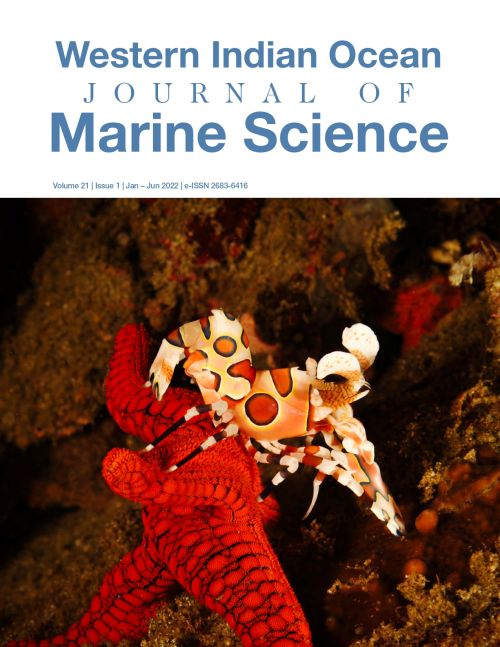Main Article Content
Use of physicochemical parameters and metal concentrations in assessing anthropogenic influences on coastal rivers in Dar es Salaam, Tanzania
Abstract
Spatio-temporal variations in water quality of three rivers along the Indian Ocean coast in Dar es Salaam, Tanzania, were investigated based on physicochemical parameters and metal concentrations. A compliance analysis was performed based on the Tanzania Bureau of Standards (TBS) and World Health Organization (WHO) limits to examine the suitability of water for domestic use. The dataset was subjected to statistical analysis to determine differences and similarities amongst the rivers. Levels of pH (6.83-11.41), total dissolved solids (203–34,333 mg/L), electrical conductivity (9,408-68,014 μS/cm), turbidity (10.0-45.0 NTU), chloride (108-14,248 mg/L), sulphate (35-766 mg/L) and ammonium (40-5,468 μg/L) complied with neither TBS nor WHO limits. Dissolved oxygen (1.4-6.6 mg/L), chemical oxygen demand (91-1,863 mg/L), total suspended solids (11.9-50.7 mg/L), alkalinity (200-2,658 mg/L), total hardness (362-12,1312 mg/L), salinity (0.19-29.35 ppt) and phosphate (<method detection limit-3.01 μg/L) indicated polluted water in parts of the rivers. Pb (0.7-24.0 μg/L) exceeded both the TBS and WHO limits, whereas Cr, Cu, Fe, Zn and Cd were below limits. Water quality was poorer during the wet season. The results indicate that water from the rivers is unsafe for human consumption and the poor water quality probably also affects the ecology of the rivers. Strategic measures to protect the rivers from further contamination are suggested.






